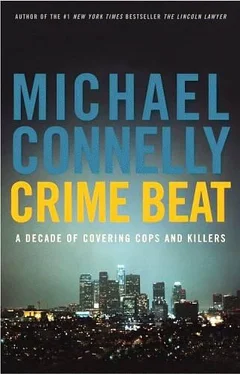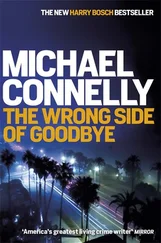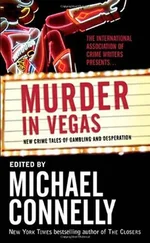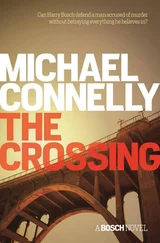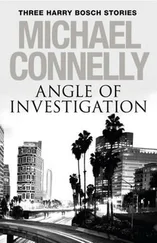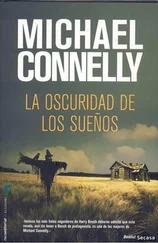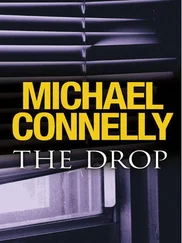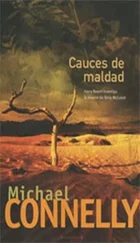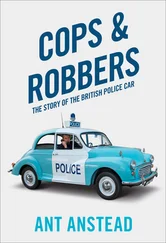The phone in the apartment rings but the detectives don’t answer it because there is blood on it and possible fingerprints. After several rings, a tape recording of Walter’s voice comes on asking the caller to leave a message. He’ll get back to them. The caller is Walter’s mother. She is hysterical and wondering what is going on.
“Please, will someone call us as soon as you know what is happening,” she pleads after the beep. A detective borrows a phone in another apartment to call.
The detectives interviewing the tenants have come up with three potential avenues of investigation: Walter evicted people from the apartment. Walter was set to be a witness in an upcoming robbery trial. And Walter frequently allowed young men to stay in his apartment in exchange for work around the building.
Working from experience, the detectives pick the third version as the best place to start. And the tenants have provided a description of a young man named Troy who was seen around the apartment as late as Friday afternoon. Let’s try to find this Troy, the detectives decide.
Dr. Dominguez is leaving the apartment now and tells Hurt the body is ready to be moved to the medical examiner’s office for autopsy. Hurt wants to know the cause of death.
“Knife wound in the back, between the shoulder blades,” Dominguez says.
“Big knife? Little knife?”
“Big knife,” Dominguez says. “Kitchen knife.”
Three men pull up to the apartment building in a white van and unload a stretcher. They are the body movers, from a company called Professional. All three are wearing suits and ties, the top buttons on their shirts fastened. They are easily the best-dressed people on the scene. They move in a solemn single file into Walter Moody’s apartment to take him on his last trip out.
As they do this, the crime scene begins breaking up. The detectives are heading off in different directions; Melwid to a fast-food restaurant to follow a lead on Troy, Ciani and Walley back to the bureau with three tenants who will help make a composite drawing of the suspect. Van Zandt also heads back. Hurt, Russo and Allen are tying up the last details at the scene before leaving. And inside the apartment, the crime scene technicians are going to take a dinner break. They will have to come back to the apartment later to begin a meticulous and long search into the night for evidence and clues.
When Walter Moody comes out of his apartment for the last time, one tenant is still standing under a shade tree, watching and sipping a beer. Moody is beneath a white sheet. Two of the Professionals – one now has blood on the sleeve and pants of his light blue suit – are straining under the weight of the stretcher, their heels shuffling on the concrete. Once down the stairs, the body is gently placed on a wheeled stretcher and covered with a green velvet blanket. It is then wheeled to the white van. One of the body movers has blue tears tattooed at the corners of his eyes. Somehow it seems appropriate. The people here can’t let true sympathy get too much in the way of the work.
At 7 p.m. the yellow plastic barricade tape police had strung across the entrance of the apartment building is taken down. The white van pulls away. The last of the police officers leave the scene. On the walkway outside the murder victim’s apartment, the cops have left five empty coffee cups behind. And there are 36 cigarette butts crushed on the cement or dropped in the wood chips spread around the shrubs that Walter Moody had once planted and cared for.
It is nearly 9 p.m. before the detectives are finished getting a composite of Troy from the witnesses and turning over the collected information to Russo and Allen, the case detectives.
Russo and Allen have several leads. First to check is a name that Mundy came up with on the police computer. It is a person being held in the county jail who gave Walter Moody’s address as his own. It might be a former roommate and someone who may know Troy. As Hurt and the other detectives head home for the night, Russo and Allen decide to head to the jail to interview the prisoner. Russo first calls her daughter to say she won’t be home until late.
At home, George Hurt watches the first half of a New York Mets and St. Louis Cardinals baseball game on TV before falling asleep. But at 12:30 a.m. he is yanked out of it by the phone. The Call. Fifteen minutes later he is at 600 Southwest 12th Avenue, the corner of Riverside Park, looking at the facedown body of a man with a bullet hole in his back. Number 39.
Walley and Ciani are also there, the partners who are up on the rotation. Van Zandt is there, cigar in hand, as well as Dominguez and the crime scene detectives. Somebody asks if anybody knows if the Mets won. Somebody else starts an electric generator and a spotlight bathes the body in a harsh white light. Above the grim proceedings the detectives can see storm clouds forming. It will rain soon. They hurry.
The detectives begin talking to witnesses and the two men who had been with the dead man when he was alive just minutes before. They get an idea of what happened.
Michael Connable, 31, was walking with two friends down Sixth Street toward the Riverside Pub. It was midnight dark, and a second group of three men were approaching from the opposite way. As the two groups passed, one of the men from Group Two opened fire. The men of Group One began running. Fifty yards later Connable fell dead a few feet from the door of the Riverside Pub, his blood slowly seeping down an incline on the parking lot toward a storm drain.
Group One did not know Group Two. Group One did not say anything to Group Two. Group One consisted of three gay white men. Group Two consisted of three black men. What did it all mean? What was the motive? Was it random violence? Was it racial? Was it because the men in Group One were gay? In the silence and the darkness, how could the shooter even have known that?
By the time the body movers from Professional arrive – the same three who came for Walter Moody – the detectives know they have the kind of case that will take a lot of work on the street.
“The only thing we can do is hope to find a snitch,” says Walley.
In the last 12 hours, Hurt and his squad have gone zero for two. They’ve got two whodunits and few clues to the perpetrators. Hurt says he could sure use a smoking gun case. He could also use some sleep.
It starts to rain as Connable is put on the stretcher and carried to the waiting van. The detectives split up and go home. Connable’s blood starts to wash down the storm drain. And raindrops fall on the face of the body mover with the tattooed tears.
On the wall in George Hurt’s office is a sign that says, “Get off your ass and knock on doors.” It might have been made with a salesman in mind, but the slogan is a creed for the homicide detective as well.
Outside his office, the squad room is a quiet place during the days following the Moody and Connable slayings. No murders occur, but the detectives are out on the street, knocking on doors.
Tuesday is autopsy day. But in these cases the autopsies will not provide information critical to solving the cases. So Walley and Ciani and Russo and Allen get the cause of death details on Connable and Moody by phone. There is no need to stand in the tiled room and watch the post-mortem procedures like they do on the TV cop shows.
What is needed is the almost always boring legwork they don’t show on TV. Walley and Ciani spend their time during the rest of the week looking for witnesses in the Connable case, knocking on doors in the Riverside neighborhood, talking to regulars at the Riverside Pub, and checking out the few phone tips that have come in. They are getting nowhere.
The detectives are also working informants, putting the word out into the netherworld network of people who sell street information that this case will bring up to $1,000for the name of the shooter.
Читать дальше
